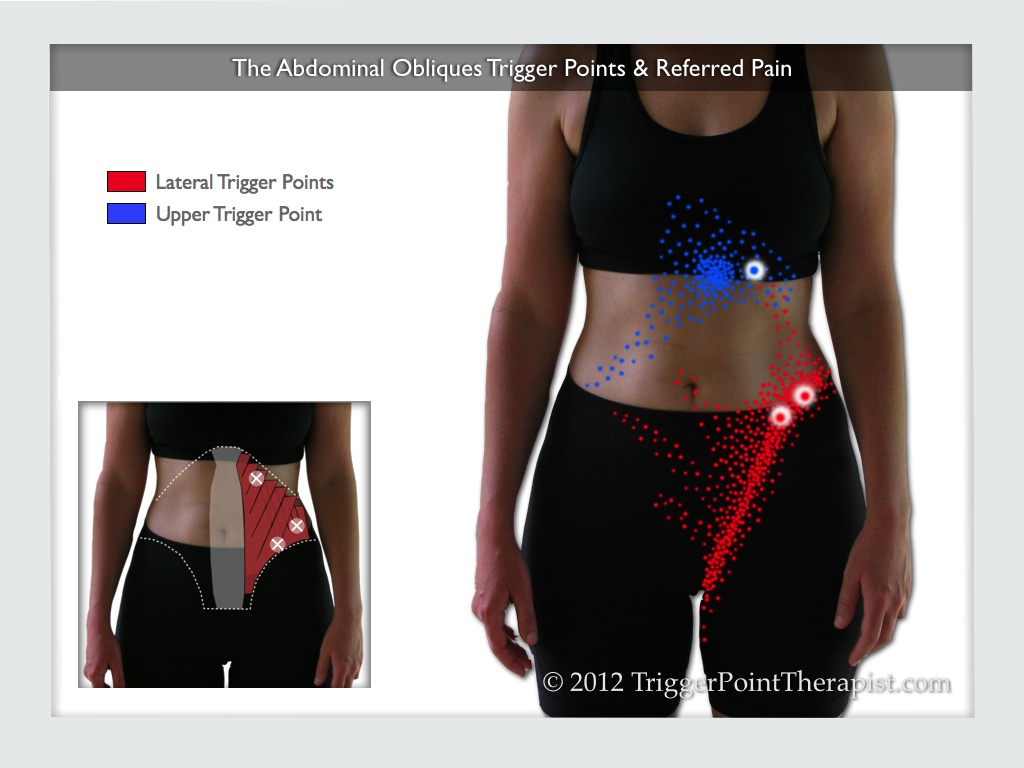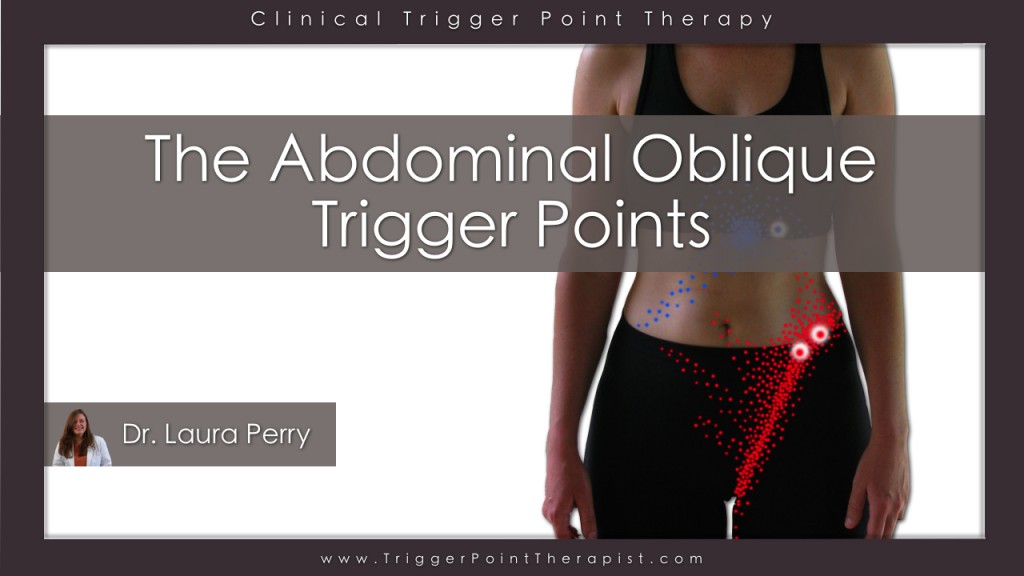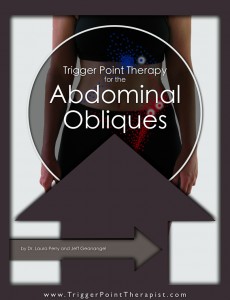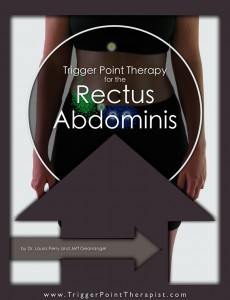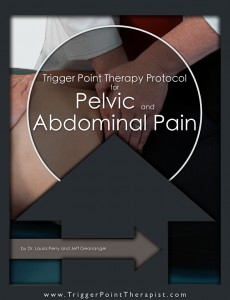The abdominal oblique muscles form the lateral wall of the abdomen and function to move the trunk relative to the pelvis. Contraction of these muscles, along with the other abdominal muscles, also acts to increase the pressure inside the abdominal cavity, which is necessary for the proper functioning of the abdominal organs.
The trigger points in these muscles are unique in that they primarily produce symptoms associated with abdominal organ dysfunction or disease. Many times, these abdominal trigger points are created by referred pain originated from the abdominal viscera, and will persist long after the visceral dysfunction has resolved itself.
Additionally, these trigger points often refer pain to the testicles and genitalia.
Because these muscles are prone to overload from emotional stress, core body mechanics, postural distortions, and visceral dysfunction, they are frequently a hotbed of trigger point activity.
The Abdominal Oblique Muscles
Location:The Abdominal Oblique muscle group forms the lateral abdominal wall. The two muscles in this group are the External Oblique and Internal Oblique, with the Internal Oblique lying deep to the External Oblique.
Function: The abdominal muscles (or core muscles) function to form the foundation for all gross movements of the body. Contraction of these muscles occurs in advanced of bodily movement to stabilize the spine in position and allow it to serve as a base for other muscles to act against. This stabilizing contraction flows from the inside out, beginning with the tranversus abdominis, followed by the internal oblique, external oblique, and finally the rectus abdominis.
The abdominal muscles also contract together to increase pressure, facilitating urination, bowel movements, vomiting, child birth, venous blood flow out of the abdomen, and forced exhalation.
Muscle Actions:
- Contracting together (both sides simultaneously) the abdominal oblique muscles produce forward flexion of the trunk (spine) on the pelvis.
- Contracting unilaterally (on one side only) the external oblique acts to rotate the trunk towards the opposite side (moving the opposite shoulder backwards), while the internal oblique acts to rotate the trunk towards it (moving the opposite shoulder forward).
- Contracting unilaterally, both muscles act to laterally flex the trunk (spine) to the same side.
The skeletal landmarks and attachments for the abdominal obliques are shown in the excerpt from the Trigger Point Therapy for the Abdominal Obliques Video Download.
The Abdominal Oblique Trigger Points
As shown in the diagram below , there are three potential trigger points in the abdominal oblique muscles:
- The two lateral trigger points are located in the lower outside quadrant of the abdomen near the Anterior Superior Iliac Spine (A.S.I.S) on the front aspect of the hip crest.
- The upper trigger point is found in the external oblique muscle that overlies the ribcage, a few inches below and lateral to the xyphoid process of the sternum (chest) bone.
Abdominal Muscle Pain
The diagram above also shows the referred pain patterns associated with the abdominal oblique trigger points.
- The two lateral trigger points refer pain to the groin, testicles (and genitalia), and diagonally across the abdomen.
- The upper trigger point refers pain in the upper abdomen and lower chest region, and produces symptoms similar to those of heartburn and hiatal hernia.
Abdominal Oblique Symptoms & Disorders
Clients with active oblique trigger points will present with any or all of the following symptoms or clinical findings:
- Pain in the deep epigastric region, such as those symptoms associated with heartburn or hiatal hernia
- Pain in the groin, testicles, bladder and lower abdominal region
- Belching, stomach distention, diarrhea
What Causes Abdominal Trigger Points?
The following events or activities may activate or reactivate the oblique trigger points:
- New abdominal exercise program
- Punching or kicking from cardiokickboxing or martial arts class
- Visceral disease such as peptic ulcer or intestinal parasite
- Abdominal surgery scar
- Impact trauma
- Constipation related straining
- Extensive coughing
- Emotional stress
- Prolonged sitting in a twisted position
Treatment of Abdominal Oblique Trigger Points
Step-by-step instructions for releasing these trigger points is available in the Trigger Point Therapy for the Abdominal Obliques Video Download or the Trigger Point Therapy for the Abdominal Obliques Booklet for the iPad.
Click on the image below to view an excerpt of the External and Internal Oblique Trigger Points video on YouTube:
Related Articles:
Related Instructional Videos:
